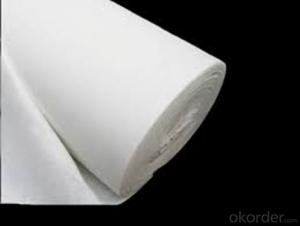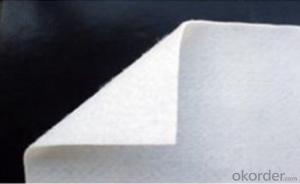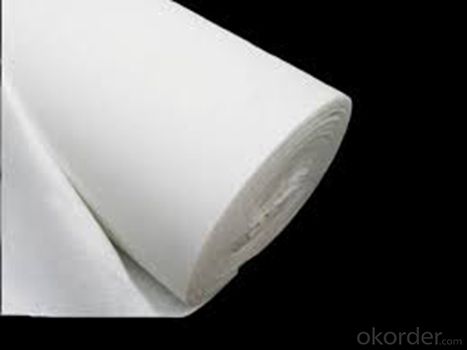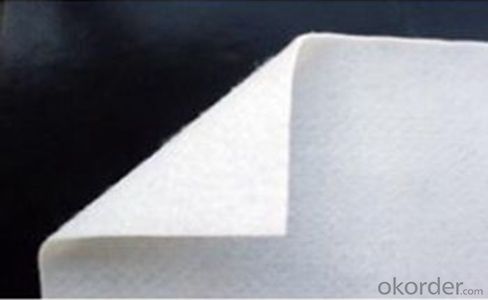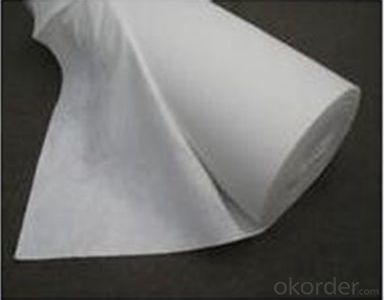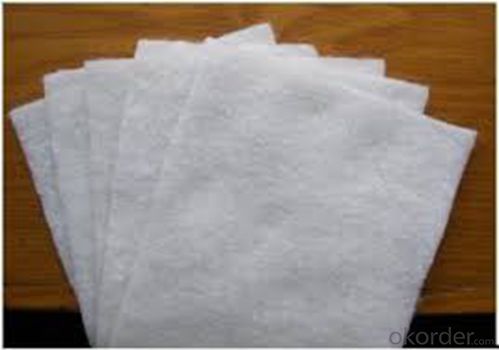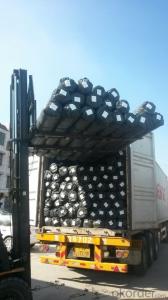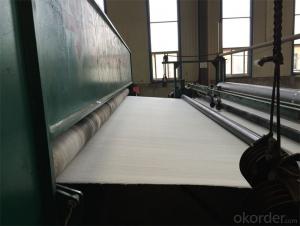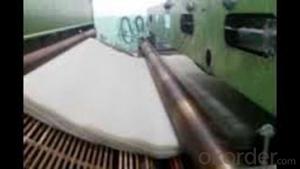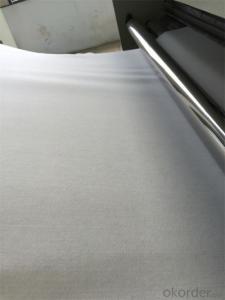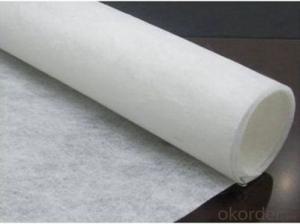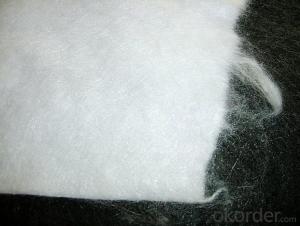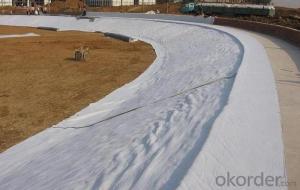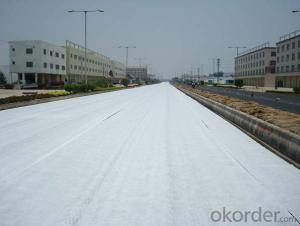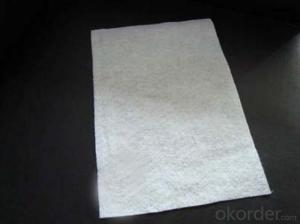Mirafi 140n PP Non-Woven Geotextile Fabric 100-1500gsm
- Loading Port:
- China main port
- Payment Terms:
- TT OR LC
- Min Order Qty:
- 1000 m²
- Supply Capability:
- 1000000 m²/month
OKorder Service Pledge
OKorder Financial Service
You Might Also Like
Specification
Specifications
1) Weight / Mass:100gsm - 1500gsm
2) width:Within 9 m
3) length: 50-100m/roll (at request)
4) Material: PP / PET
5) Color: Black,white,grey
6) Certification: CE/ISO900,CE
7) Manufacturing method: nonwoven(short fiber needle punched) / woven (filament)
Geotextiles including :needle punched nonwoven geotextile , filament woven geotextile , composite geotextile + geomembrane,Geotextile Bags.
Features
It owns the advantages of acid and alkali resistance, erosion resistance, aging resistance, large strength, stable size, good filtrability,High strength, good capacity of elongation and high biology tolerance,low cost, easy in construction etc.
Sample for Technical Specification (GB/T17638-1998)
We also can design special geotextiles according customer’s requests
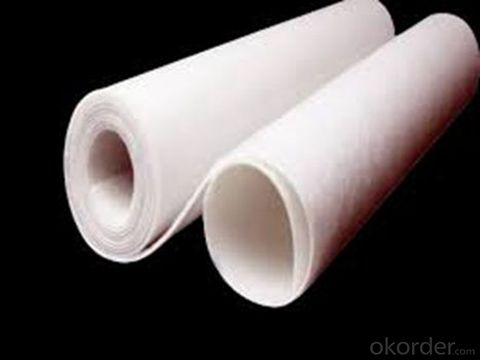
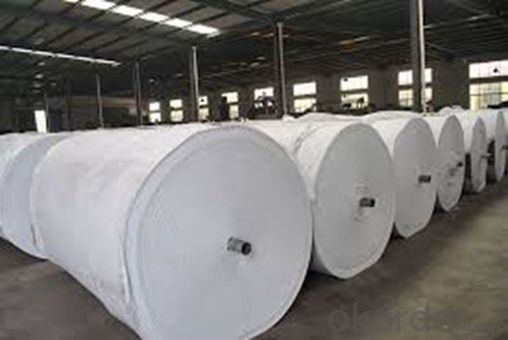
Packaging & Shipping
Packing: PLASTIC FILM INSIDE, AND WOVEN BAG OUTSIDE
Shipping: About 15 days after receipt the deposit
pecifications
geotextile fabric
permeability,filtration,easy for construction
ISO and CE certificate
Good quality and competitive price
Our Service
Quality assurance
1.On a regular basis or as per your request,we entrust national testing agencies to conduct quality inspections
2. Strictly in accordance with the ISO9001-2008 international quality system standard,we monitor and manage the whole process throughout production,quality testing,and measurement to ensure product quality
3. For quality-related construction delay or substandard construction(except for damage or losses due to customer’s responsibility or irresistible natural disasters),we have refunding,replacement,and repair services.We will respond to customers’ feedbacks on quality issues within 24 hours.
After-sales service
1.In order to provide customers with comprehensive technical support,we will provide technical and other related information upon request in a timely manner.
2.In required,we will appoint specialized technicians to the construction site to give technical trainings to construction people,and offer technical guidance throughout the whole construction process.
3.For damage due to shipment and delivery,after we receive the complaint,we will check the issure through provided pictures and videos.If our responsibility is confirmed,we wil offer free replacement.
4.When the construction is completed,as your request,our technical staff may participate in the final acceptance.
FAQ:
Q: What kind of payments does jenor support?
A: T/T, L/C, Cash are accepted.
Q: Do you charge for the samples?
A: Accordeing to our company policy, the samples are free, we only charge the freight fee. And we will return the freight fee during the next order.
Q: Can you produce according to customers' design?
A: Sure, we are professional manufacturer, OEM and ODM are both welcome.
Q: Do you have other products?
A: Yes, please check the pictures:
- Q: How do geotextiles help with erosion control in river channels?
- Geotextiles help with erosion control in river channels by providing a physical barrier that stabilizes the soil and prevents it from being washed away by flowing water. They also promote vegetation growth by allowing water to permeate while filtering out sediment, ultimately protecting the riverbanks from erosion.
- Q: Geotextile what is the law?
- Geotextile, also known as geotextile, it is made of synthetic fiber through acupuncture or woven from the permeability of geosynthetics. The American Society of Agricultural Engineers defines geotextiles as geotextiles or geosynthetics that exist between soils and pipelines, gages, or retaining walls that enhance water movement and impede soil movement. ASTM 4439 standard geotextile is defined as: a purely permeable geosynthetics to form textiles. Is used in soil, rock, soil or other geotechnical engineering related materials and acts as a component of a human-made project. Geotextile is a new type of building materials, raw materials are polyester, polypropylene, acrylic, nylon and other polymer polymer synthetic fiber. In accordance with the manufacturing method is divided into: there are two types of geotextile and non-woven geotextile. General engineering is mainly used non-woven geotextile. Geotextile with filter, filter, isolation, reinforcement, protection, sealing and other functions.
- Q: What are the key factors affecting the hydraulic conductivity of geotextiles?
- The key factors affecting the hydraulic conductivity of geotextiles include the size and shape of the geotextile fibers, the porosity of the material, the thickness of the geotextile, and the applied pressure or load. Other factors that can influence the hydraulic conductivity include the type of soil or aggregate being filtered, the presence of any clogging materials, and the overall condition and integrity of the geotextile.
- Q: What are the cost considerations for geotextiles?
- The cost considerations for geotextiles depend on factors such as the type and quality of the geotextile, the required strength and durability, the size of the project, and the installation method. Generally, higher-quality geotextiles with better performance characteristics tend to be more expensive. Additionally, the quantity of geotextile required for a project and the labor costs associated with installation can significantly impact the overall cost. Therefore, it is essential to carefully analyze the specific needs of the project and compare prices from different suppliers to make an informed decision.
- Q: Can geotextiles be used for reinforcement of canal banks?
- Yes, geotextiles can be used for reinforcement of canal banks. Geotextiles provide stability and erosion control, helping to prevent soil erosion and maintain the integrity of canal banks. They can be used to reinforce the soil, distribute loads, and provide filtration and drainage, making them a suitable solution for reinforcing canal banks.
- Q: How do geotextiles aid in the reduction of frost heave?
- Geotextiles aid in the reduction of frost heave by acting as a barrier between the underlying soil and the freezing temperatures. They help to prevent the migration of water into the soil, which is a major factor contributing to frost heave. Additionally, geotextiles can provide reinforcement and stabilization to the soil, reducing its susceptibility to frost heave.
- Q: What are the applications of geotextiles in landscaping?
- Geotextiles have various applications in landscaping, including erosion control, soil stabilization, and weed suppression. They can be used to prevent soil erosion on slopes, retain soil in embankments, and enhance the stability of retaining walls. Geotextiles also act as a barrier to prevent weed growth, reducing the need for herbicides. Additionally, these textiles can be employed in drainage systems to improve water filtration and prevent soil compaction. Overall, geotextiles provide valuable solutions for improving the sustainability and longevity of landscaping projects.
- Q: How do geotextiles help with soil stabilization in foundation construction?
- Geotextiles help with soil stabilization in foundation construction by providing reinforcement and separation functions. They act as a barrier between different soil layers, preventing their intermixing and maintaining their structural integrity. Additionally, geotextiles improve the load-bearing capacity of the soil by distributing the applied loads more evenly, reducing settlement and increasing stability.
- Q: How do geotextiles help in preventing soil compaction?
- Geotextiles help in preventing soil compaction by providing a barrier between the soil and external forces, such as heavy machinery or foot traffic. This barrier distributes the load evenly, reducing the pressure on the soil and minimizing compaction. Additionally, geotextiles enhance soil drainage, allowing water to infiltrate and prevent waterlogging, which can also contribute to soil compaction.
- Q: What are the different geotextile installation guidelines?
- The different geotextile installation guidelines include proper site preparation, ensuring the soil is smooth and free of debris, anchoring the geotextile securely to prevent movement, overlapping the geotextile to ensure complete coverage, and using appropriate techniques for joining and sealing the geotextile. Additionally, it is crucial to follow manufacturer instructions and consult with an engineer for specific project requirements.
Send your message to us
Mirafi 140n PP Non-Woven Geotextile Fabric 100-1500gsm
- Loading Port:
- China main port
- Payment Terms:
- TT OR LC
- Min Order Qty:
- 1000 m²
- Supply Capability:
- 1000000 m²/month
OKorder Service Pledge
OKorder Financial Service
Similar products
Hot products
Hot Searches
Related keywords
